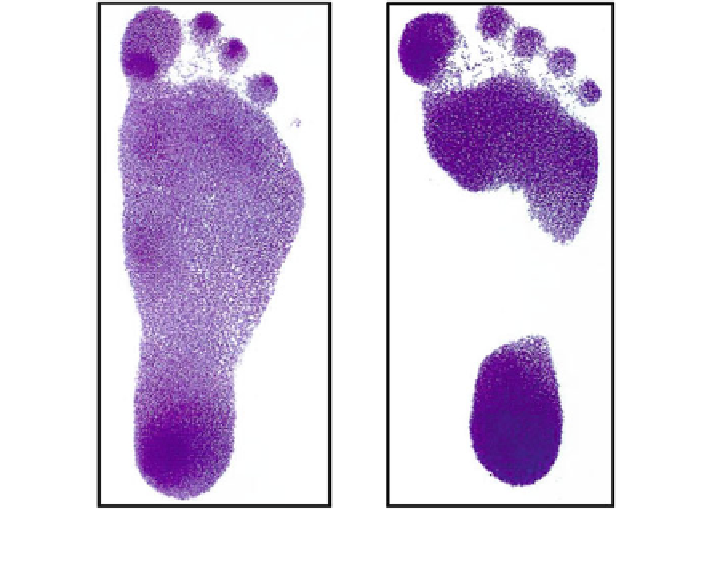Biomedical Engineering Reference
In-Depth Information
Fig. 4 A sample of weight-bearing footprints recorded with a pedograph for an obese child (left)
and a non-obese pre-pubertal child (right), both 8 years of age
displayed a significantly greater foot-ground contact area than their leaner coun-
terparts (Fig.
4
). Napolitano et al. [
56
] also suggested that obesity might have a
substantial effect on the lower limbs of children during the period of physiologic
ligament laxity, which is normal in young children. Numerous studies utilising
external anthropometric measurements, footprints, three-dimensional scans, radi-
ology, photography and computed tomography scans have since confirmed the
notion that young obese children and adolescents have more robust and flatter feet
compared to their normal weight peers [
51
,
57
] (Table
1
), suggesting that struc-
tural changes may be occurring as a consequence of bearing excess body mass as
they progress through the normal stages of growth and development.
Although there is consensus that obese children have flatter feet, there is less
agreement on the cause of this flatter foot structure. It is possible that obese
children's feet remain robust and appear flat as a result of fatty tissue (plantar fat
padding) that has not yet disappeared from the medial arch area of the foot (i.e. a
fatter foot) [
55
,
58
]. Alternatively, the flatter foot appearance could be caused by a
lowering of the osseous and ligamentous structures of the medial longitudinal arch
due to the need to continually bear excess body mass as has been reported for young
children (i.e. a flatter foot; see
Sect. 4.1.1
). Complicating determination of the
cause of flatter foot structures is that during normal pre-pubertal growth, lower limb
alignment changes can influence foot posture and hence arch structure [
59
].

Search WWH ::

Custom Search